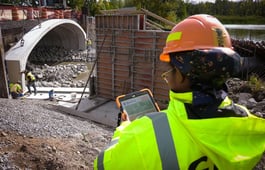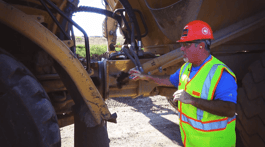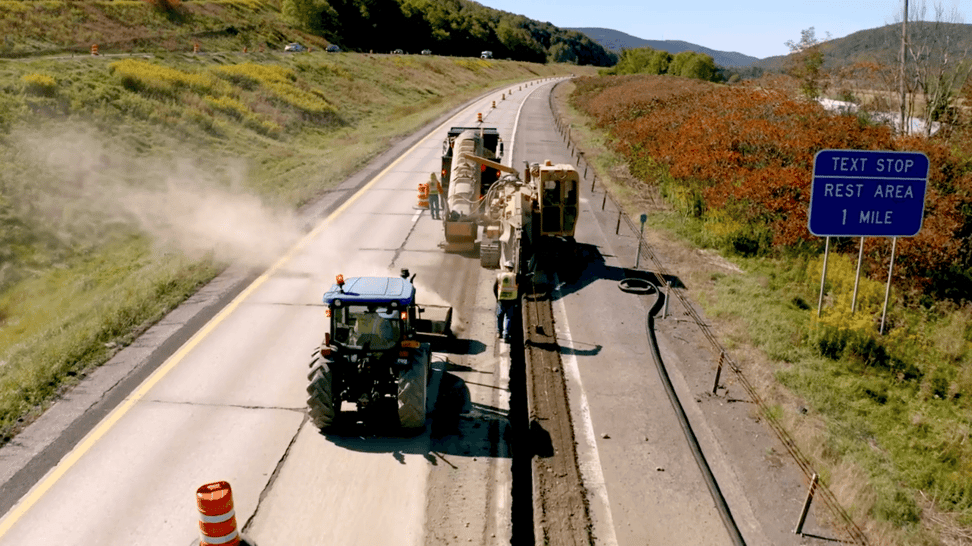
Construction sites are inherently dangerous places to work. Every year, construction industry employees report thousands of workplace injuries and accidents. Many of these are minor, but some can be life-changing or even fatal. Accidents can happen for various reasons, but let's face it, it is often due to a lack of training or awareness.
The construction industry is behind almost all industries when it comes to digitization and the adoption of new technologies. Even though the industry struggles to shake off its dinosaur reputation and is considered to be late to the game when it comes to digital transformation, there has been a lot of progress in recent years. The so-called "brick and mortar" sector is slowly but surely digitizing. And one of the areas where this transformation is most evident is construction safety training.
Innovative leaders in the construction sector are taking advantage of the latest technological advances to deliver more engaging and effective safety training program to their employees. They have realized that digital technologies provide a huge opportunity to optimize safety processes, reduce costs, and increase efficiency on construction sites worldwide.
This blog post will cover some of the latest trends and technologies that are changing the face of construction site safety training. We will also explain how the aQuiRe™ app can help you deliver better construction safety training to your workers and ultimately create a safer working environment.
What is construction safety training?
Construction safety training covers a wide range of topics, from general health and safety awareness to specific training on the use of equipment or handling hazardous materials. It aims to make sure that employees are fully aware of the risks involved in their work and know how to avoid accidents and injuries.
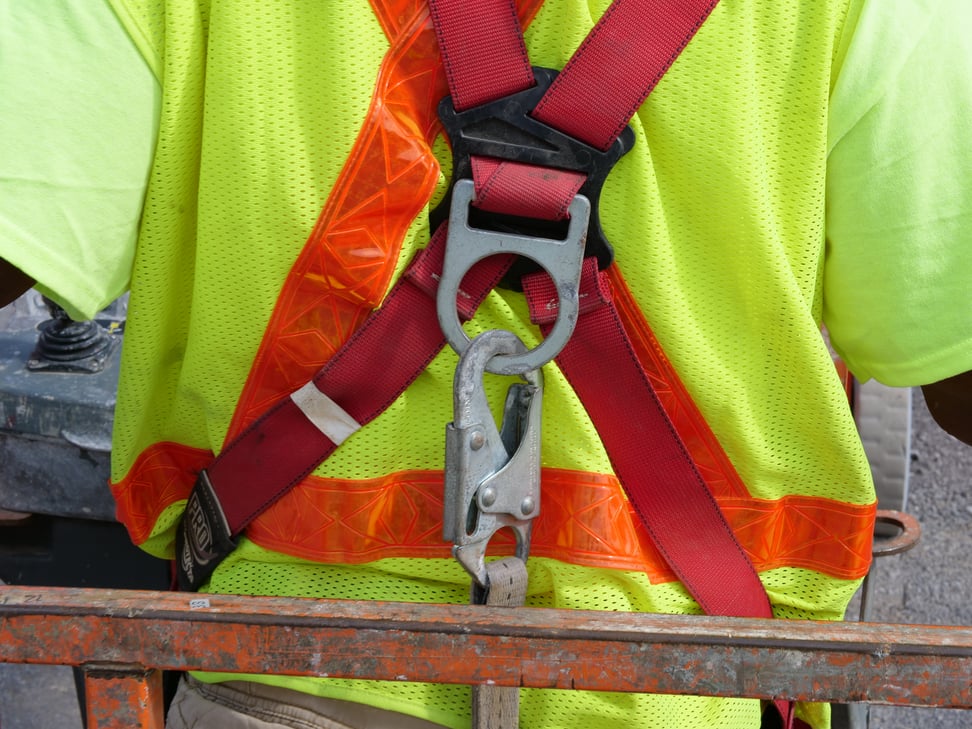
Worker safety training can take many different forms, depending on the company's needs and the specific risks involved in the work. Think of your annual kick-off meeting, the classic Toolbox/Tailgate Talk or a manufacturer coming by to demo a new machine or PPE product. Some companies provide online training courses that employees can complete at their own pace, while others offer more interactive training sessions led by safety experts.
Whatever form it takes, construction safety training is essential to keeping employees safe on job sites. Remember, a struck by, a caught between, or a fall are almost always permanent and life-altering events. When we prioritize risk mitigation and loss prevention we are using a proactive rather than reactive methods.
Why is safety training necessary?
It seems whenever we talk about workplace safety, the phrases "nanny state" and "health & safety gone mad" are not far behind. The general perception is that many health and safety rules are, at best, overprotective and, at worst, downright ridiculous and lack any common sense. We often hear that due to all the rules and regulations, we are "wrapping people in cotton wool" and that the defined threshold for 'danger' or 'hazard' is impractically low.
But the truth is, construction safety training is not about over-protective bureaucrats imposing pointless rules and regulations. It's about ensuring employees are aware of the risks involved in their work and that they know how to avoid potential problems.
While some may dismiss health and safety rules, we often lose sight of the fact that these rules are in place for a reason. Every year, thousands of people are injured or killed in workplace accidents. According to the U.S. Bureau of Labour Statistics, roughly 20% of worker deaths in the United States are in construction, while construction workers make up only 6% of the U.S. labor force.
So, while some health and safety rules may seem over the top, the reality is, they are not only a legal requirement; they increase efficiency, reduce costs, create a good working environment, and, most importantly, save lives. Investing in a good safety program gives you nothing to lose but everything to gain.
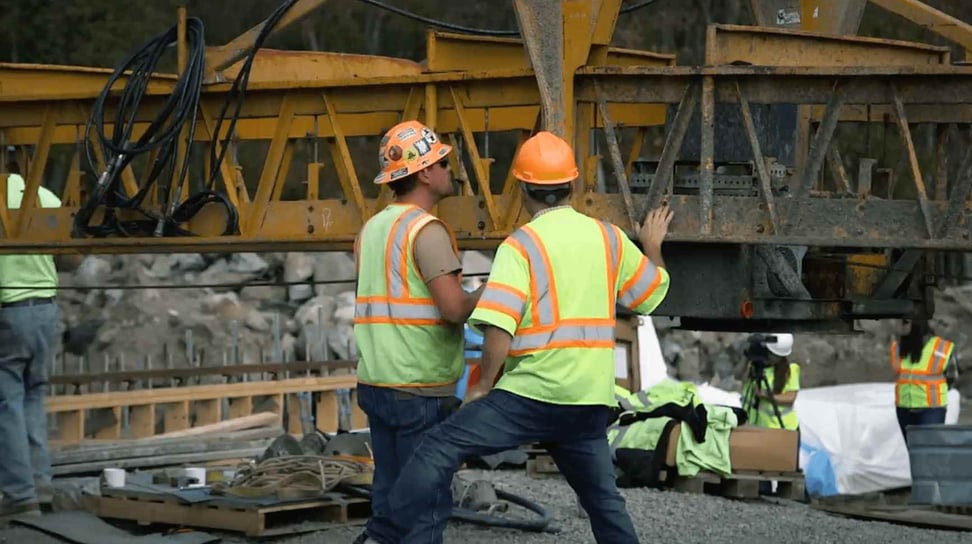
Different technologies that are driving site safety training
Technology is changing how we work, and safety training is no different. The latest technologies are helping to create more engaging and effective safety orientation programs, allowing us to reach a wider audience and deliver more targeted training.
Here are just a few of the latest trends and technologies that are making a significant impact on construction safety education:
Virtual reality
Virtual reality (VR) is one of the most talked-about technologies in the construction sector. VR headsets allow users to immerse themselves in an entirely computer-generated environment, which makes them the perfect tool for delivering interactive safety training program.
For example, with VR, you can place employees in a simulated construction site where they can practice identifying and avoiding hazards. This type of training can be far more effective than traditional methods, as it allows employees to get a first-hand experience of what they need to do to stay safe on job sites.
On the negative side, however, VR headsets can be expensive and require a certain amount of technical know-how to set up and use.
Augmented reality
Augmented reality (AR) is similar to VR, but instead of placing users in a completely simulated environment, it superimposes computer-generated images in the real world. This makes AR a more versatile technology that can be used in various ways.
For example, with AR, you could create an interactive safety training program that uses a job site as its backdrop. This would allow employees to learn about hazards and how to avoid them in a real-world setting. At the moment, the CAHill team is in the process of filming drone footage for this very purpose.
Alternatively, you could use AR to create a virtual safety audit of a job site, allowing employees to identify potential hazards before they become a problem.
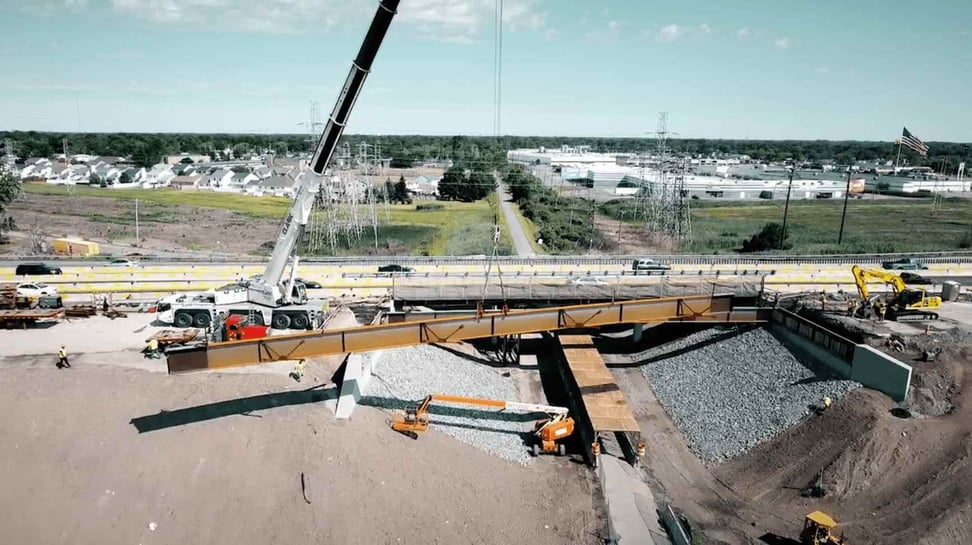
Drone technology
Drone technology is another trend that is making a big impact on construction safety training. You can use them to create virtual reality simulations of job sites.
Drones are handy for conducting audits of job sites, as they allow you to get a bird's eye view of the site and identify potential hazards that might be difficult to spot from ground level. You can use them to create 3D models of job sites, which can be used for training purposes or to help plan safety processes.
At CAHill, drones are commonly used to create custom content and training modules for our clients. Modules such as "Swinging Steel", "Just Dredge It" and "Taper" are all examples of where drones have been used to create realistic and engaging training content.
Cloud-based mobile applications and platforms
The cloud is making it easier than ever for construction companies to develop and deliver safety training programs. Cloud-based applications and platforms, such as aQuiRe™, can be accessed from any device with an internet connection, which makes them incredibly convenient for busy construction workers.
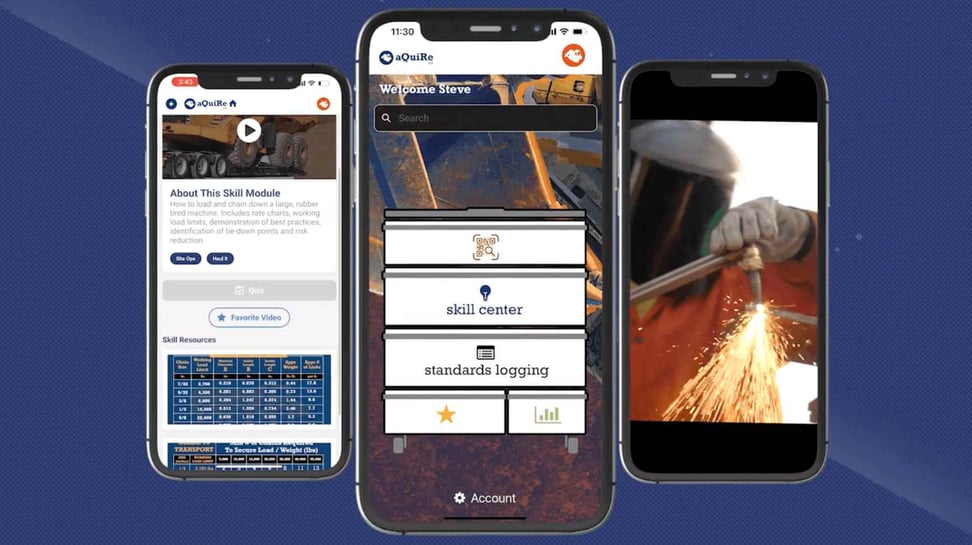
Additionally, because they are hosted in the cloud, these applications and platforms can be updated in real-time, so employees always have access to the latest safety information. Using a cloud-based platform is a cheaper, more efficient way to deliver safety training, making it easier to track employee progress and compliance with safety procedures.
Wearable technology
Wearable technology is another trend that is starting to make an impact on construction safety training. These devices can deliver targeted, real-time employee feedback about their safety performance. They can collect and transmit data on things like heart rate, location, and environmental conditions, which can improve safety procedures.
Collected past safety data can also be used to create reports to help identify trends and areas where improvement is needed. Additionally, wearable devices can be integrated with other technologies, such as drones and AR, to create more immersive and interactive safety training experiences.
When talking about wearable technology, you might immediately think of Google Glass, smartwatches, or fitness trackers. But there are various wearable devices designed specifically for construction use, such as hard hats with built-in heads-up displays and safety vests and boots with integrated sensors.
Benefits of using technology for safety training
While introducing construction safety technology into your training program might be challenging, many benefits make it worth the effort. When done right, technology can make safety training more engaging, interactive, and effective. This is particularly true for younger workers who are used to having technology as a part of their everyday lives.
Some of the other benefits of using technology for safety training include:
- Increased engagement
- Greater interaction and collaboration
- Improved retention of information
- Flexibility and convenience
- Enhanced safety reports
- Improved compliance
- Occupational safety
No matter what type of construction safety technology you use, the most important thing is that it is appropriate for your audience and aligns with your safety goals. By using interactive and immersive technologies, you can capture employees' attention and keep them engaged throughout the training process. This will help ensure that your safety procedures are followed and that your job site is as safe as possible.
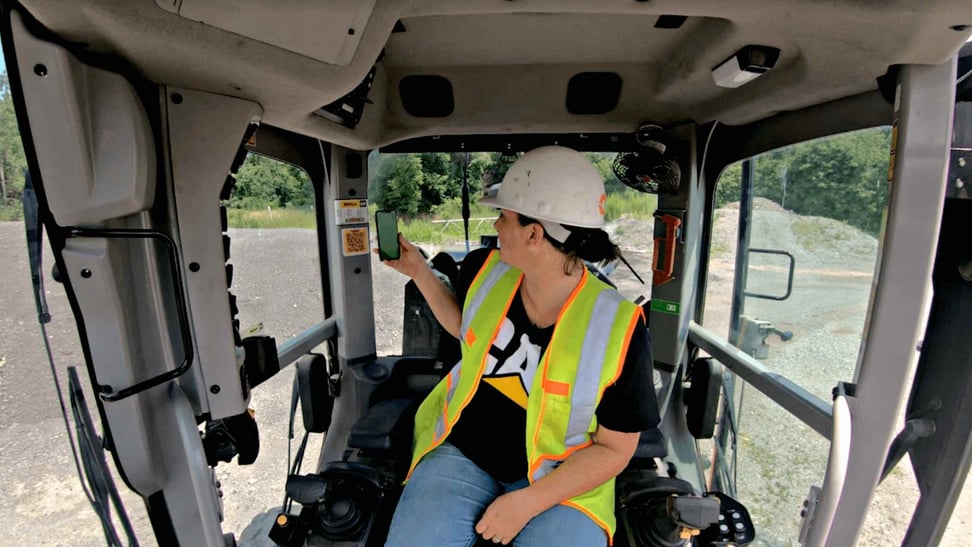
Train and protect your workers with the aQuiRe™ platform
The aQuiRe™ platform helps construction firms deliver safety and job site training and compliance to their employees in a more engaging, interactive, and effective way. The platform consists of the mobile app and the Business Portal.
The CAHill team designed the mobile app to be used by field workers of all digital expertise and skill levels, from apprentices to journeymen. It provides access to surveys and coaching, allowing workers to leave feedback on their training or the machinery they use. The app also includes Standards Logging, a logbook feature that records job site activities and can be used to create safety reports.
The Business Portal is a web-based application that gives construction managers, safety coordinators, and back office employees the ability to track employee progress, compliance, and safety incidents. It also provides safety resources, such as training materials and manuals.
For companies with specific needs, aQuiRe™ also offers customized solutions. These solutions include custom-made modules, from software and machinery training to employee welcome videos. The aQuiRe™ team can work with you to understand your company's specific needs and create a solution that meets your requirements.
Using the aQuiRe™ platform, you can ensure all your site and in-office workers complete their safety orientations before stepping onto the job site. With a growing library of over 300 training modules, CAHill has you covered for all your construction safety needs.
Conclusion
Technology has drastically changed the construction industry over the last few decades. Construction workers now have access to various tools and machines that make their jobs easier and more efficient. But as construction sites have become more complex, so has the need for construction safety.
In the past, safety training was often seen as a necessary evil - something that had to be done but wasn't necessarily enjoyable. However, with the introduction of new technologies, safety training can be more engaging, interactive, and effective. Using technology to improve your safety training program can ensure your employees are better prepared to work safely on the job site.
To learn more about how aQuiRe™ can improve your construction safety training, visit CAHill TECH or book a free demo here.


